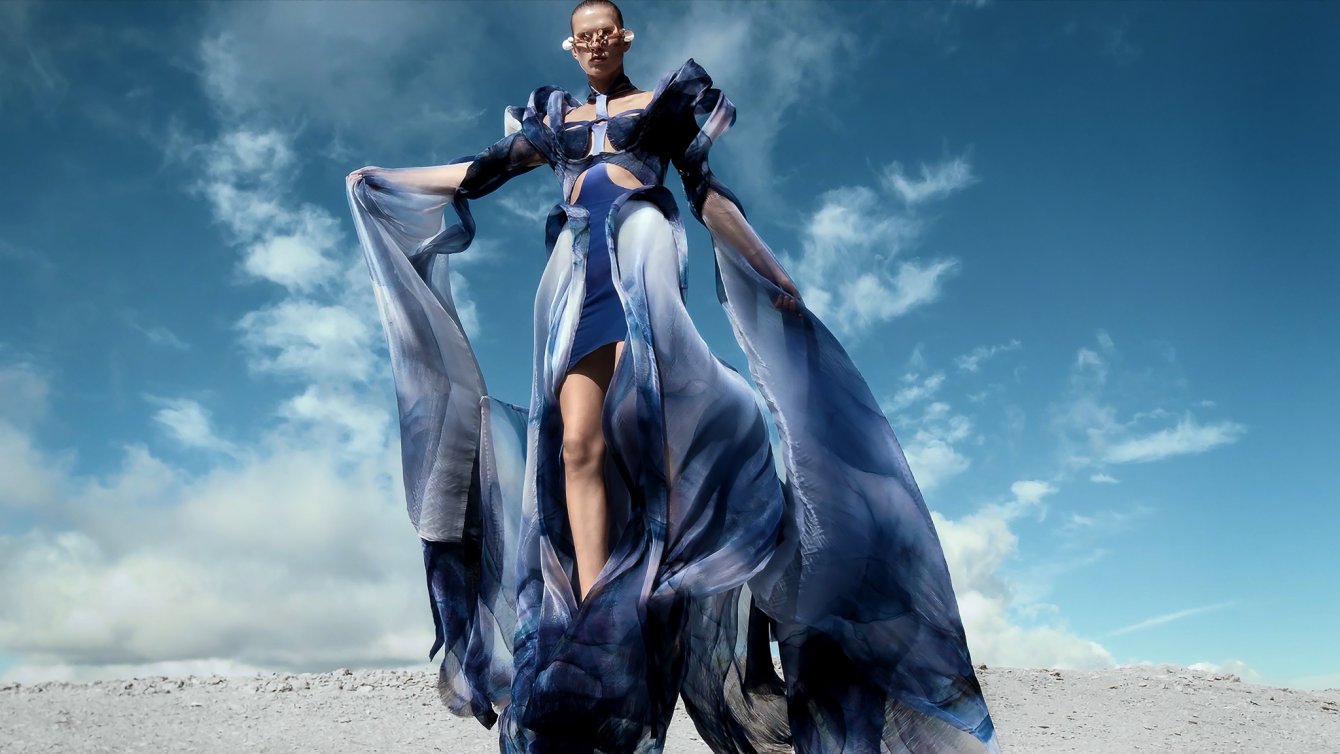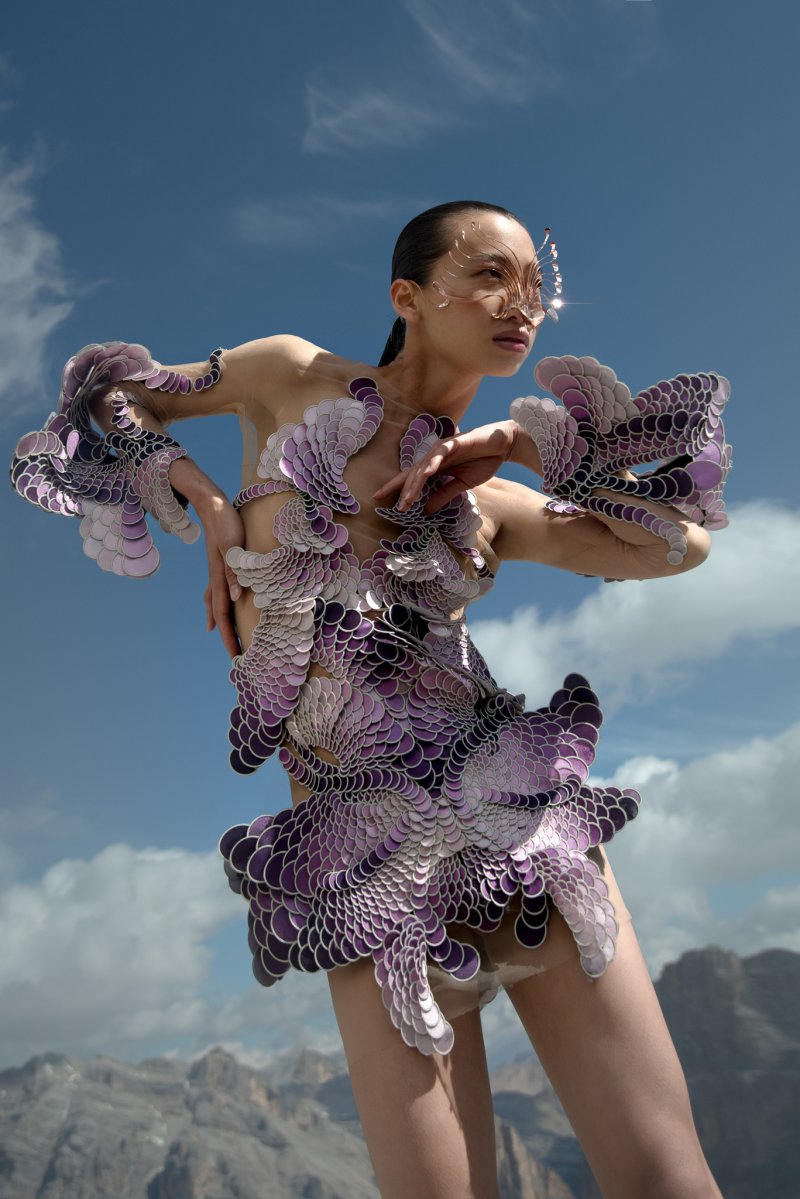Iris Van Herpen is arguably the one designer pushing couture the furthest in terms of innovation, working with researchers and scientists to widen the possibilities of fashion design.
Her eponymous brand, founded in 2007 in Amsterdam, was quickly a force to be reckoned with for industry experts. The Dutch designer started showing her collections during Paris Couture Week in 2011. Since then, her creations have been worn by numerous superstars like Celine Dion, Katy Perry, Cate Blanchett and many more.
Van Herpen’s designs have this surreal quality, looking more like auras enveloping the ones wearing them rather than some typical, elegant Couture looks. She is famous for playing with texture and gravity, and draws her inspiration from nature. The Sensory Seas collection, for example, was inspired by marine ecosystems. Her work is an exploration of new definitions of femininity, empowered by architectural, organic garments.
The designer showed the world that 3D printing could be used to create absolute works of art and revolutionized the discussion around technology in the fashion industry. Her creative process includes many collaborations with architects, scientists and artists like Björk or Lady Gaga. Van Herpen mixes artistic, scientific and artisanal processes to offer us a new definition of luxury, that gathers the best methods invented by humans to deliver state-of-the-art creations.
The very interesting thing is that technology, for fashion, often means the destruction of precious craftsmanship techniques, a possibility for overproduction and overconsumption, and replacing human skills at any cost. Van Herpen’s methods show that things can be done differently. She highlights the importance of putting together craftsmanship and innovations to create designs that are not only strangely beautiful but sustainable.
To begin with, 3D printing allows fashion companies to avoid a large amount of wasted materials, as the machines only print what is necessary for the garment’s making. This might not seem much, but thinking about all the waste the industry is producing each year, this could change many things for fashion. Therefore, Van Herpen’s approach is the opposite of fast fashion, as each of her designs are made on-demand and has minimal waste.
The designer also partners with scientists and biologists to develop new materials that are part of nature’s cycle and can go back to the environment after making a garment, without leaving any trace. She sees Couture as an experimentation ground to explore a new vision of luxury, implementing it in the 21st-century’ challenges.
All images in this article are courtesy of Iris Van Herpen.









